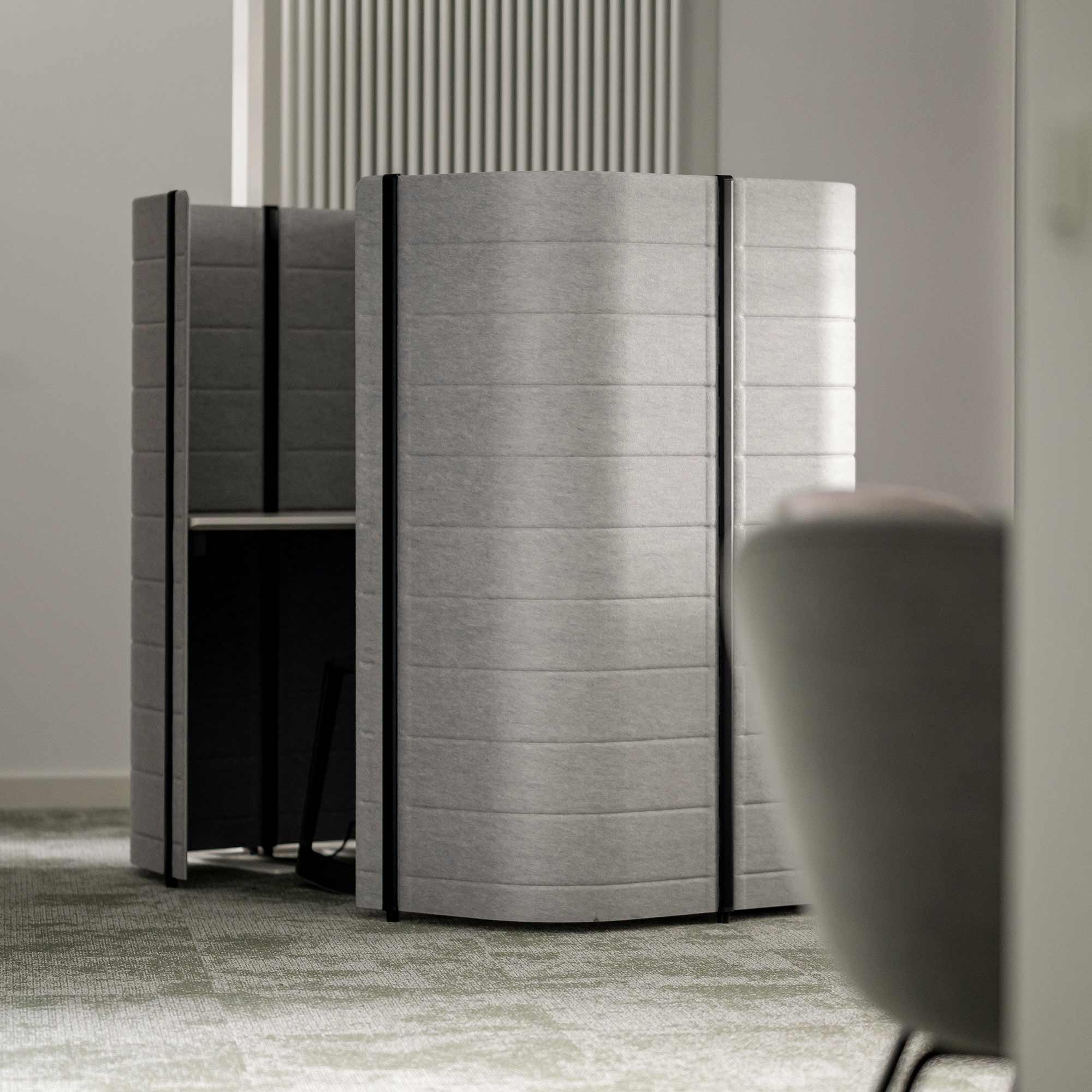Nagging backaches and tense shoulders are often the product of unhealthy posture at the desk. Thankfully, small adjustments can often provide relief. This article reveals the importance of the 90-degree angle along with some clever tricks for setting up an ergonomic workspace.
1. Proper Office Chair Adjustment
The most important element for a healthy workspace is the office chair. Here's how to adjust it correctly:
Utilise the entire seat: To achieve a proper sitting posture, sit upright using the entire seat. Relax your shoulders and make sure your back maintains firm contact with the backrest, thus maintaining the natural S-curve of your spine. Then, make sure both feet are fully on the floor.
Find the correct seat height: Once you have properly fine-tuned your seated posture, adjust the seat height so that an angle of 90 degrees, up to a maximum of 100 degrees, is formed between your upper and lower legs, without losing contact with the seat or backrest. Most chairs have a lever on the side to change the height of the seat, and even small adjustments can significantly enhance your comfort.
2. Correct Desk Height and Optimal Room Position
Every body shape is different, and your unique build is crucial for setting up your desk properly. The correct height for your desk, based on your body shape, will help you avoid neck, back and shoulder pain. The desk’s position in the room is also important for establishing a healthy and efficient workspace.
Make sure your desk is the correct height: If the desk is too high, you'll unconsciously raise your shoulders. If it's too low, you'll tend to hunch your back. Both can cause discomfort and even pain. To find the correct desk height for you, observe the following guidelines: Your upper and lower arms should form a right angle with your wrists resting on the desk. If the desk is too high and not adjustable, changing the height of your chair and using a footrest can help.
Optimal position and size: Your desk should be positioned parallel to the window to avoid glare. Additionally, it should be large enough, ideally around 160 cm x 80 cm, to be able to work comfortably. A height-adjustable desk allows for an ergonomic sit-stand workspace solution. For fixed desks, however, a height of about 74 centimetres is a good guideline.
Desk surface: Choose a light-coloured, matte surface to prevent reflections. Rounded edges and natural materials are also important, both enhancing comfort and preventing distractions or skin irritation.
Legroom: Make sure you have ample space under your desk, preferably around 120 cm x 80 cm. Cables should be bundled together or otherwise arranged to improve safety and ensure an orderly work environment.
The workspaces at Office Club – whether they are flexible workspaces or office rooms – offer ergonomic comfort in addition to a top quality and highly modern working environment. Click here to discover which offer best suits your needs.
3. Adjusting Your Screen Ergonomically
Incorrect monitor positioning can lead to back problems, shoulder tension, headaches and eye irritation. The following tips can help you avoid such issues:
Alignment: Position the screen directly in front of you in the centre of your desk. It should be parallel to the front edge.
Placement: Place your screen perpendicular to the window, if possible. Doing so prevents annoying reflections and protects your eyes. Do not sit with your back to the window, as this could produce eye strain, particularly in situations where there is significant contrast between the sunlight from the window and the brightness of your screen. Avoid placing the screen directly in front of the window, as this can also strain your eyes.
Viewing angle and height: The top edge of the screen should be approximately at eye level. Tilt your head slightly downward (at an angle of about 10 degrees) to promote relaxed neck muscles. Avoid having to look constantly upward or significantly downward, since constant flexing of the upper spine can produce pain and tension. For prolonged use of laptops and tablets, screen holders can be helpful for maintaining the proper posture.
TIP: Don’t forget to blink! The rate at which you blink tends to drop significantly when you spend hours in front of a computer screen. Dry, irritated eyes can be the result. Make sure to take screen breaks every now and then to refresh your eyes.
4. Ergonomic Use of Keyboard and Mouse
For the keyboard and mouse, the rule is: They must be easy to reach. Here's how to find the right position for both:
Keyboard and mouse within reach: Hold your arms at a 90-degree angle, shoulders relaxed, a few centimetres above the surface of your desk. If the keyboard is too far forward on the desk or too close to your belly, move it so that it is directly beneath your hands. Your fingers should rest lightly on the keyboard, fingers relaxed and curved – like a pianist. Now you have the right position.
Mouse to the side: Position your mouse right next to the keyboard. The more centred you work, the better. Doing so relieves the upper arms, shoulders and neck. Consider whether a compact keyboard or an ergonomic mouse, such as a trackball mouse, might be right for you.
With these simple tips and tricks, you can make your workday more pleasant and reduce potential discomfort. Remember to pay attention to your posture even when under stress. In doing so, you'll not only work more efficiently – you’ll also stay healthier!


